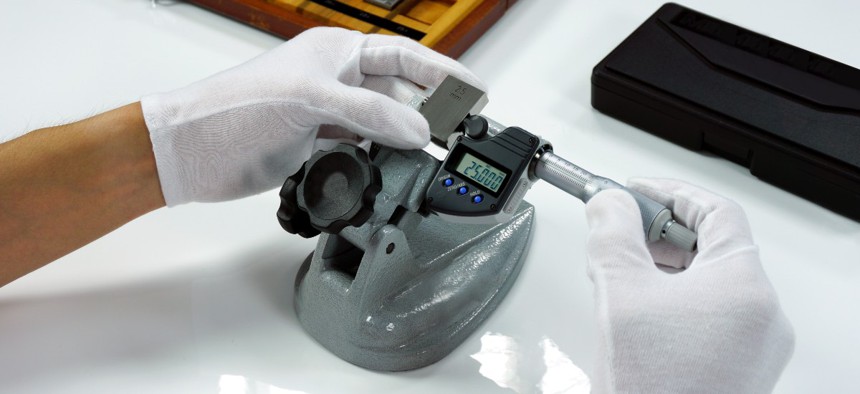U.S. Semiconductor Production Will Rely on Improved Measurement Science, NIST Reports

Thatree Thitivongvaroon/Getty Images
Metrology—the science of measurement and its applications—will influence the quality and reliability of electronics as they get smaller and smaller.
Following the passage of the CHIPS and Science Act earlier this month, the National Institute of Standards and Technology outlined seven strategic opportunities for U.S. semiconductor manufacturing on Thursday, focusing on the importance of measurement science—or metrology—research and development to spur innovation for the next-generation of chips.
The report identified seven challenges—and strategies to address these challenges—in measurement, standardization, modeling and simulation, in an effort to help boost the nation’s semiconductor industry.
The challenges were in the following categories: metrology for materials purity, properties and provenance; advanced metrology for future microelectronics manufacturing; enabling metrology for integrating components in advanced packaging; modeling and simulating semiconductor materials, designs and components; modeling and simulating semiconductor manufacturing processes; standardizing new materials, processes and equipment for microelectronics; metrology to enhance security and provenance of microelectronic based components and products.
“The measurement challenges impacting the U.S. semiconductor industry are at a critical stage and must be addressed if we are to ensure U.S. leadership in this important sector,” Laurie E. Locascio, under secretary of commerce for standards and technology and NIST director, said. “We’ve received extensive feedback from stakeholders across industry, academia and government that will help us provide urgently needed measurement services, standards, manufacturing methods and test beds and build even stronger partnerships with this industry.”
According to NIST, metrology is important throughout the lifecycle of semiconductor development, but “[a]s devices become smaller and more complex, the ability to measure, monitor, predict and ensure quality in manufacturing becomes much more difficult.” The report draws on information collected from NIST’s semiconductor metrology R&D workshops.



